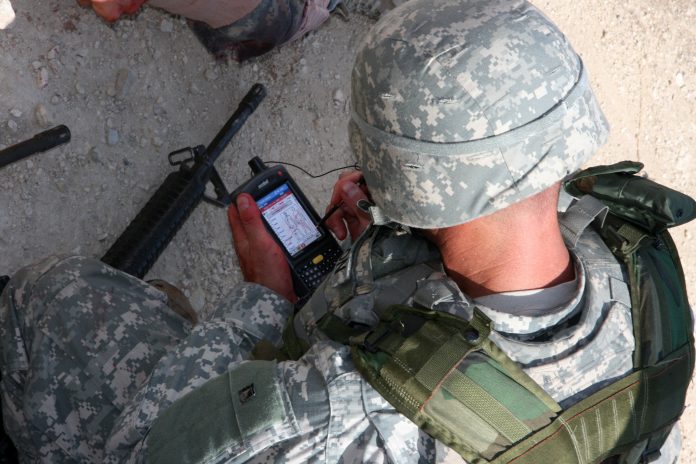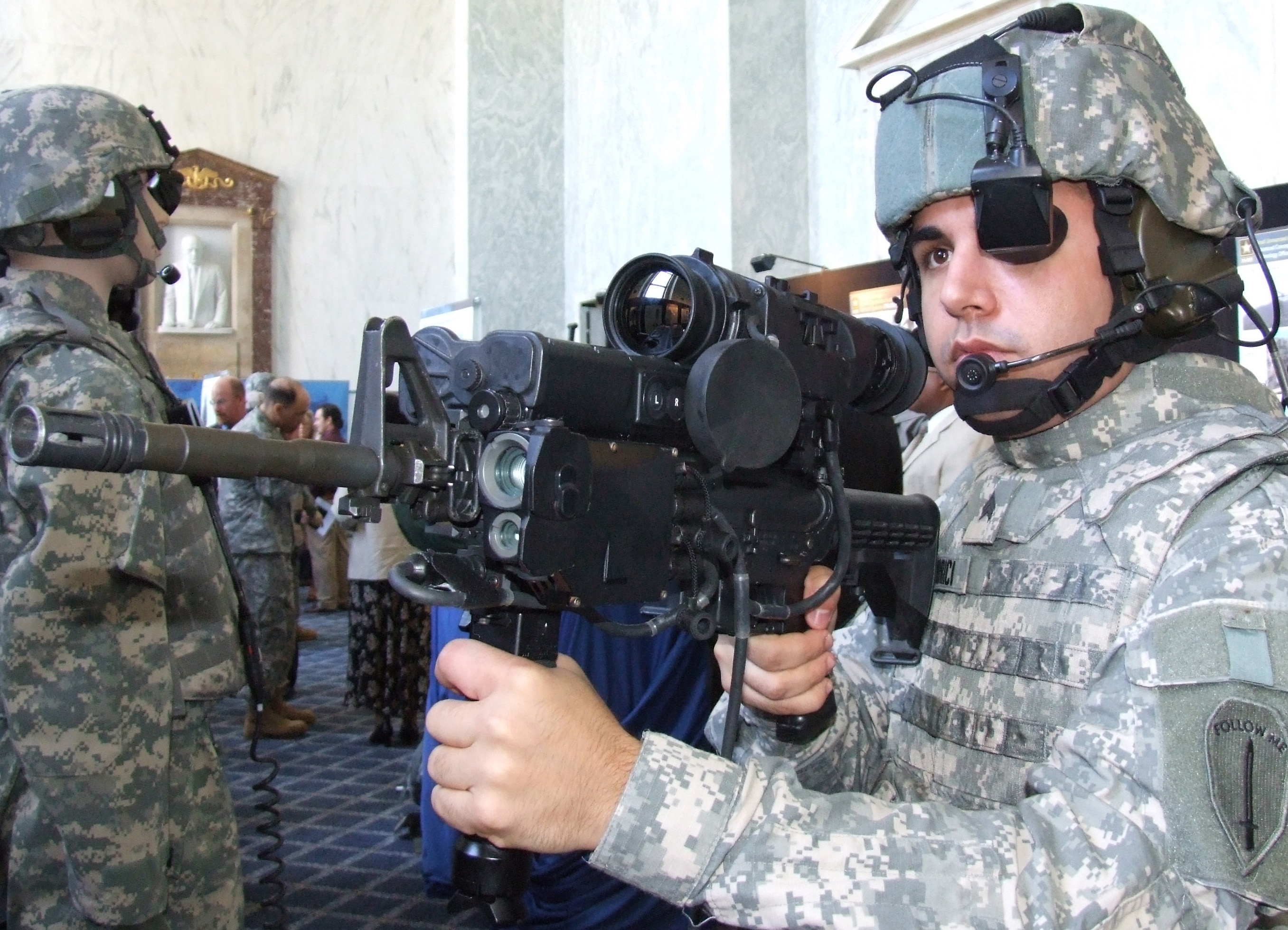
The modern soldier market continues to see particular emphasis placed on reduction in the Size, Weight and Power (SWaP) of batteries in order to reduce the burden on the dismounted soldier, while maximising the electricity available to power their needs.
The SETAF (Soldier Equipment Technology Advancement Forum) event held in London this March heard from the German, UK and US armed forces regarding ongoing struggles to reduce weight carried by soldiers, with mobility over the battlefield as well as protection remaining critical requirements moving forward. According to the British Army’s Lieutenant Colonel Iain Moodie, the British Army’s Dismounted Close Combat Capability Directorate noted at SETAF that the maximum combat weight for reconnaissance patrols has been identified to comprise 40 kilograms/kgs (88 pounds/lbs), while research has found that no more than 25kgs (55lbs) should be carried by soldiers when conducting offensive action missions, particularly in the urban environment.
Explaining how soldiers operating in Afghanistan had typically carried combat loads of 58kgs (127.6lbs), Lt. Col. Moodie warned how musculoskeletal injuries continued to represent significant long term problems for the armed forces. “If we increase the weight, cognitive performance is reduced and they get tunnel vision which in turn effects survivability. We have to reduce kit to enable dismounted (soldiers) to do their jobs and increase situation awareness,” he warned delegates at SETAF.
Such thoughts were reiterated by US sources who cautioned how the addition of more batteries to increase mission endurance of dismounted soldiers would inevitably mean increases in the weight of future soldier concepts including the US Army’s Nett Warrior effort. One such military source explained to Armada how environmental conditions in Afghanistan, in particular, had created a distrust in the logistical re-supply chain, with soldiers willing to carry extra batteries and magazines of ammunition in case they were not re-supplied due to airframe unavailability or topographical constrictions (areas of Eastern Afghanistan were difficult to access by helicopters due to high altitudes). “Sometimes, soldiers don’t trust they’re going to get re-supplied. If I can stash away an extra magazine or box of ammunition and batteries, I’ll do that as well. We’re our own worst enemy in a lot of cases and some are not willing to break that down,” the sources explained.
Equipment
According to the former programme manager at the US Army’s Soldier PEO, Richard Hansen, the Nett Warrior’s basic ensemble weighs just 1.6kgs (3.5lbs) and comprises a General Dynamics/Thales AN/PRC-154A Rifleman Radio, Samsung Galaxy S5 Smartphone End User Device (EUD), Rockwell Collins AN/PSN-13 DAGR (Defence Advanced Global Positioning System Receiver) and centralised battery system. The US Army describes the Nett Warrior programme as providing for infantry squads, fire teams and individual soldiers to “pinpoint the location of (homemade bombs), (enemy combatant) cells, or high value targets with improved speed and precision … Nett Warrior enhances dismounted soldiers’ survivability by rapidly disseminating locations of suspected enemy (explosives) and snipers on the EUD and also helps prevent fratricide by providing locations of mounted forces and dismounted friendly soldiers,” an army spokesperson explained to Armada.
So far, the army has received 7000 ensembles with an additional 10000 in the production pipeline, destined for both USSOCOM and army units. A total of 60000 ensembles are expected to be issued to the US armed forces over the next few years. Existing power solutions for Nett Warrior include the Squad Power Manager 5590 solution and Modular Universal Battery Charger (MUBC), both of which are manufactured by Thales.
Explaining the technology, Mr. Hansen described how the MUBC in particular would be well positioned to replace a wide variety of battery chargers currently in the army’s inventory. The news follows a $49 million contract award by the US Army to Thales for the delivery of the Universal Battery Charger (UBC), a variant of the MUBC, which will be fielded at platoon and squad levels. However, Thales officials explained to Armada that further reductions in size could see the technology equipping individual soldiers in the near future. The UBC will be capable of supporting platoon and squad level operations for more than 72 hours with a capability to charge a variety of power systems including Lithium Ion batteries.

Protonex, a US-based company, is currently supporting Nett Warrior and other specialist initiatives including USSOCOM’s Tactical Assault Light Operator Suit (TALOS) with regards to reducing SWAP (Size Weight And Power) parameters for battery power and associated Command and Control (C2) systems. “The power suites needed to keep these multiple devices powered has seen huge advances as well. Conformal batteries, wearable and form fitting, provide increased power without the bulk of conventional batteries, and power manager systems allow multiple incompatible devices to feed off these batteries and even recharge the battery from multiple sources, including solar blankets … The Nett Warrior system shares a single lightweight battery to power both commercial and military system components and includes the capability to charge that battery on the go. As such, it is being embraced by dismounted infantry and special operations teams that need to operate untethered from wall outlets and vehicles for long periods of time,” a company spokesperson explained.
The company has designed the Squad Power Manager 622 system to comprise a multi-port recharging system which also boasts the capacity to manage and prioritise usage of power. The unit is available in handheld and manpack configurations, dependent upon combat loads required for particular missions. According to a company spokesperson the Squad Power Manager is designed to offer up a “lightweight, compact and rugged intelligent power management solution designed to withstand the harsh operating conditions of military field use. This unit directly powers virtually any (portable) military equipment, recharges a squad’s batteries and intelligently adjusts to changing mission conditions or requirements.” The unit comprises six power ports allowing for concurrent recharging and features a display informing the user of battery status. Two ports can also support renewable energy or solar recharging. Additional features provide a capability to operate when submerged in water; warning LEDs (Light Emitting Diodes) for soldiers when battery power is critically low; and data analysis function for after action review and mission planning.
Meanwhile, Protonex is also marketing its Vest Power Manager 402 unit, which the company claims offers a “user friendly solution to the challenges of managing and utilising any power source for commonly used military devices.” The Vest Power Manager, which is smaller in size in comparison to the Squad Power Manager, is made up of just four power ports with additional power management capabilities via a display. “With this capability, a (soldier) can begin a dismounted mission assured that every battery in their kit is fully charged. The VPM-402 provides on-the-go battery recharge from solar panels, vehicles, or virtually any other source,” the company proclaimed.
Computing Power
Elsewhere in the US, the Defense Advanced Research Projects Agency (DARPA) is pressing ahead with a next-generation battery solution, designed to enhance power and mission efficiency of C2 systems during a mission. A $10 million award was made to IBM Corporation in September 2015 to consider architecture, concurrency, resilience, locality, algorithms, simulation and testing concepts with a view to increasing current capabilities from 1 Giga Floating Point Operation Per Second Per Watt (GFLOPS/W; a measure of computer performance) to 75. According to DARPA literature, the programme seeks to “increase the power efficiency of deployed embedded systems, providing greater computational capability and thereby greater military effectiveness.” Computational capability is an enabler for nearly every military system, but increases in this capability are limited by available system power and constraints on the ability to dissipate heat. This is a challenge for embedded applications such as soldier-borne applications, unmanned aerial vehicles, and command and control systems on submarines. “Such computational capabilities could be improved if the amount of computation that can be performed per watt were increased,” DARPA added while explaining how currently research has proven a requirement for at least 50 GFLOPS/W for contemporary operations.
Meanwhile, the Israel Defence Force has contracted Arotech to supply dismounted force elements with 70000 Lithium Ion rechargeable batteries in 2016 and beyond. Highlighting the $8.5 million contract, Elizier Hasson, senior director for C4I procurement in the Directorate of Procurement and Production at the Israeli Ministry of Defence, described how the procurement of the Lithium Ion batteries and charging systems would bring a “quantum leap” in the command and control capabilities of the IDF’s combat units across the modern battlefield.
However, Mr. Hansen described to Armada how requirements for battery power in the contemporary and future operating environments could soon be much better controlled with more introduction of Smartphone/EUD applications or ‘Apps’ designed to allow a single platform to conduct multiple missions. Referring to ongoing efforts in the Nett Warrior programme, he explained how future versions of the ensemble could soon include such apps for parachute navigation, sniper ballistic calculators, tactical combat casualty care, foreign language translation and heat trace detection, to name just a few.
Finally Lt. Col. Vest argues that the most effective weight savings in the dismounted role will be made with the introduction of wireless technology to network and power the wide variety of C2 technology carried on the modern battlefield. Furthermore, speaking at the SETAF Lt. Col. John Vest of the US Army’s Training and Doctrine Command called for international collaboration for the introduction of standardised connectors and batteries allowing for enhanced interoperability across the battlefield in line with growing requirements for multi-national operations.
by Andrew White













